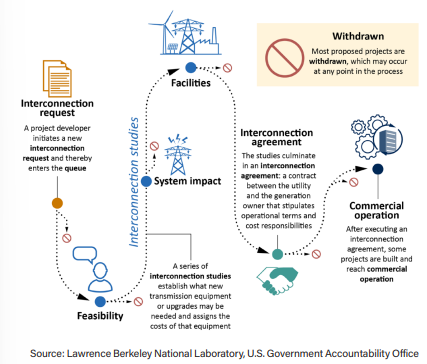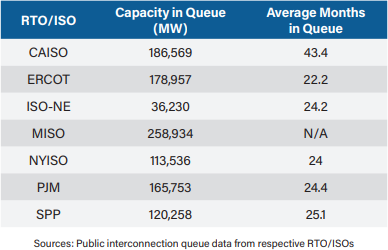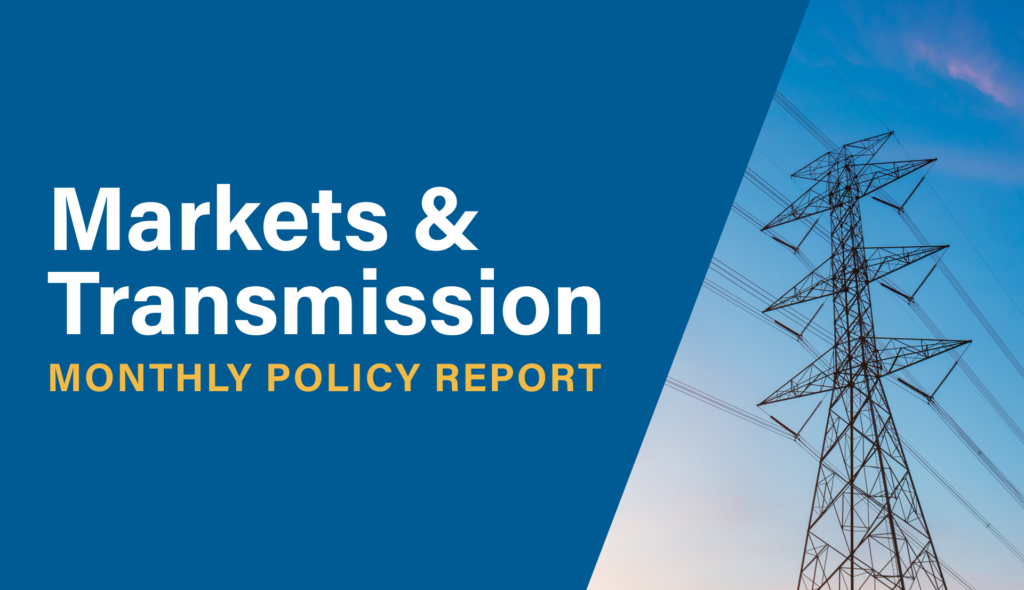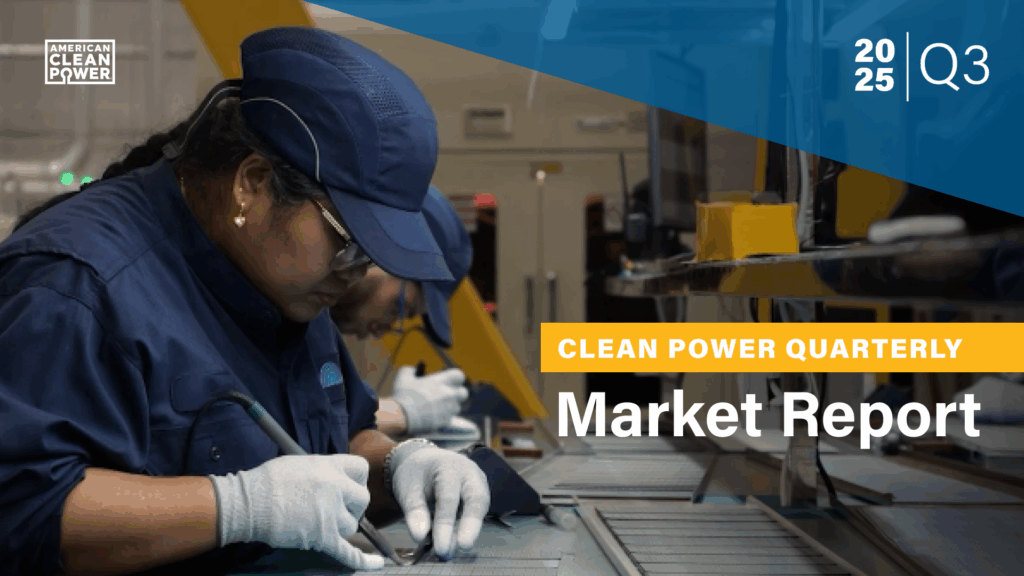Interconnection is the complex process of connecting new electricity generators – like wind, solar, and energy storage – to the electric grid.
This guide covers the essential studies, steps, and challenges that can lead to interconnection timelines of up to 4 years, along with resources for further information on regional processes and timelines.
Frequently Asked Questions
What is interconnection?
Interconnection is the set of rules that new electricity generators—wind, solar, gas, energy storage, nuclear, or otherwise—must follow to connect to the electric grid and deliver energy to customers.
Every regional grid has its own set of rules, but most require every project to undergo a rigorous, multi-step study process to assess potential impacts to the grid from the new generation. These studies often result in requiring the generator to fund any necessary upgrades to grid infrastructure before securing an interconnection agreement. Any grid upgrades identified during the study process must then be completed prior to the generator coming online.
It can take up to 4 years for a project to move through the entire interconnection process – though every region is different.
How does a project begin the interconnection process?
Details differ by region, but in general: to begin the process (“entering the queue”), a potential generator needs to:
• submit a detailed application;
• place a deposit;
• eventually demonstrate it is likely to secure land-use agreements for the project location (also called “site control”).
What happens next?
STUDIES: Once the application and deposit have been submitted, the local utility and grid operator (if applicable) will work with the project owner (“interconnection customer”) on a series of studies assessing the project’s potential impact on the grid.
The three typical studies are:
• Feasibility study: determines whether plugging the project
into the grid would cause electrical problems and assesses whether transmission upgrades are needed to prevent problems.
• System impact study: requires more detailed information from the customer, and assesses grid impacts in more detail. The project’s design can still change at this stage.
• Facilities study: estimates in greater detail the costs of equipment, engineering, and construction of the facilities needed (such as wires and substation upgrades) to connect the project to the grid. At this point, the design of the project is fairly certain.
After each study is complete, an interconnection customer makes the determination to advance to the next phase, based on the information provided by the utility and grid operator.
Studies may need to be re-done if a proposed generator higher up in the queue decides to cancel their project and drop out of the queue, as it could change the impact and upgrade needs for other proposed generators. When this occurs, it can add to the review time for a project.
What is an "Affected System" study?
In some cases, interconnecting new projects causes impacts beyond the local transmission system, into adjacent transmission systems.
When there could be effects on other utilities’ or grid operators’ systems, they will perform “affected system” studies, which evaluate similar information to the three studies mentioned above.
Affected system studies can take longer to be finalized in many regions. Better coordination between adjacent transmission systems can help to determine costs and prevent significant issues.
What happens when the studies are complete?
After the studies are complete, an interconnection customer will determine whether the upgrade costs mean the project can economically interconnect to the grid.
If the project is determined to interconnect to the grid, the interconnection customer and the utility or grid operator will sign a Generator Interconnection Agreement. This is the plan for building the facilities and implementing the upgrades that will allow the project to connect to the electric grid. A project cannot interconnect until those improvements are constructed.
Does every project being studied eventually sign an agreement, and come online?
Projects can drop out of the interconnection process for several reasons – for example, the upgrade costs could be much higher than they had expected, or delays in the studies could prevent them from being able to comply with construction permits.
However, rather than cancelling the project, some developers may reapply to the queue later after revising the project layout and / or proposed technology (for example, changing the project size or adding energy storage to it).

How long does it take to complete the interconnection process?
It can take up to 4 years for a project to move through the entire queue process – though every region is different.
For example, below are the current project capacities (as reported by Lawrence Berkeley National Laboratory in 2023)* in the interconnection queues across the regions, as well as how long the average project has been waiting to be interconnected.

* In-service date was only available for 58% of all operational projects.
How can I help speed up the interconnection process?
Contact the Federal Energy Regulatory Commission (FERC)’s Office of Public Participation, the federal regulator who sets the minimum requirements for interconnection processes, and the grid operator in your region to urge them to take steps to improve the interconnection process and timelines.
What is being done about the backlog of projects waiting to interconnect?
FERC, utilities, regional grid operators, generators and other stakeholders are working to address the long study periods in the interconnection queue through revisions to federal rules and regional and utility interconnection procedures.
Additional Resources on Regional Interconnection Process:
- Southwest Power Pool (SPP)
• SPP – High-Level GI Fact Sheet - PJM
• PJM Interconnection Process – Overview - Midcontinent Independent System Operator (MISO)
• MISO Generator Interconnection Process – Queue Process Workshop
• MISO Generator Interconnection Process – Flow Diagram - California Independent System Operator (CAISO)
• CAISO – Interconnection Basics - New York Independent System Operator (NYISO)
• NYISO – General Resources - General
• PV Plant Interconnection Procedures



